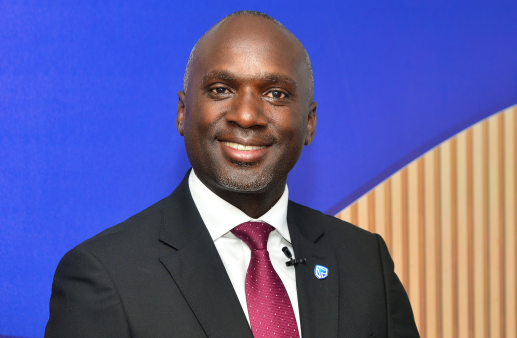In venture capital, a ‘funding winter’ denotes a prolonged period marked by reduced capital inflow, posing formidable challenges for startups seeking investment. During this financial downturn, startups often contend with workforce cuts, delayed capital decisions, slashed departmental budgets, and diminished valuations compared to previous funding rounds. A funding winter serves as a rigorous test of resilience for founders, forcing them to navigate volatile market conditions, while also presenting investors with an opportunity to identify robust investment prospects amid the economic chill.
The global startup funding winter, which started in early 2022 and shows no signs of abating in 2023, arose from a combination of macroeconomic challenges and geopolitical tensions that act as catalysts. Factors such as surging energy and living costs and the Russia-Ukraine conflict-induced disruptions led to a worldwide economic slowdown. This climate of uncertainty drove investors to prioritize existing portfolios, intensifying the funding winter as new startups struggled to secure essential capital for growth and expansion.

This is the third funding winter that has affected startups across the world. The first one was the dot-com bubble in the late 1990s and early 2000s while the second one was the 2008 Financial Crisis, but this didn’t affect startup funding as much as the other two. Despite the funding winter being global, even African startups are not spared because, in the majority of countries, local venture capital isn’t developed and many startups turn to the West to raise funding.
In a funding winter, two financial metrics stand out as critical indicators of a company’s health and longevity: Burn Rate and Runway. These terms, while seemingly complex, are fundamental to understanding a startup’s financial trajectory and sustainability.
Burn Rate, in its simplest form, is the speed at which a startup exhausts its capital to meet operational costs. These costs encompass a wide range of expenses, from employee salaries and office rent to marketing initiatives and other overheads. Essentially, it measures how swiftly a startup is depleting its available cash reserves.
Imagine a startup as a ship sailing in the vast ocean of business. The Burn Rate is akin to the rate at which the ship is consuming its fuel. A high burn rate, much like a ship guzzling fuel at an alarming rate, signals potential danger. It indicates that the startup is rapidly draining its resources, which could steer it towards financial turbulence if not managed effectively.
On the other hand, Runway is the projected duration a startup can continue to operate before it exhausts its funds, given its current burn rate and cash reserves. In our ship analogy, the Runway is the estimated distance the ship can travel with the remaining fuel. Extending the runway, therefore, implies increasing the duration a startup can function without needing additional funding. This provides a crucial safety net in an environment where funding can be unpredictable or scarce.
To illustrate, consider a startup with a monthly burn rate of $50,000 and cash reserves of $500,000. The runway for this startup would be ten months, meaning it can operate for ten months before it runs out of money. If the startup can reduce its burn rate to $40,000, it extends its runway to twelve and a half months, providing a valuable buffer.
Understanding and managing Burn Rate and Runway is particularly crucial in a ‘funding winter,’ a period characterized by a significant slowdown in venture capital funding. During such times, startups must be prudent with their spending and strive to extend their runway to survive until the funding climate improves.
How Ugandan Startups Can Reduce the Burn Rate and Extend Runway.
1. Pause Expansion Initiatives
Prioritize Core Markets: Rather than ambitiously venturing into uncharted territories, channel your energy into nurturing and expanding within your primary markets. This strategy alleviates resource pressure and lays a robust foundation for future growth. For instance, a tech startup might choose to focus on enhancing its software within its existing customer base before branching out to new industries.
For example, with the funding winter not slowing down, SafeBoda quit its expansion into Nigeria to focus on becoming profitable in Uganda. Also, another startup, rural e-commerce pioneer, Copia Global, exited the Ugandan market to focus on growing in its core market of Kenya. In a funding winter, the growth-by-all-means strategy is not attractive because it leads to a high burn rate.
2. Streamline Workforce
Downsize Non-Essential Employees: This is a tough call but sometimes inevitable. Evaluate your team and retain only those with indispensable skills and roles crucial to the business’s core functions. If practical, a startup can transition to a remote work model. This can drastically cut overhead costs associated with office space and facilities. However, this is a very radical shift.
Globally, tech startups have laid off thousands of workers. More tech workers have been laid off in 2022 and 2023 than in 2020, a year which was ravaged by COVID-19 and the subsequent lockdowns that forced people to stay indoors. In Uganda, startups like Wave, SafeBoda, Jumia Uganda and Copia Global have all laid off workers. Many other African startups have followed suit.

3. Exercise Financial Prudence
Salary Deferrals: Engage your team in a conversation about temporarily deferring salaries, particularly for higher-paid positions. Maintain transparency about the reasons and assure them of future compensation. A startup, for example, might propose a temporary salary cut for its executives, promising to compensate once the financial situation improves. Examine every expense, regardless of its size. Identify ways to eliminate unnecessary costs, negotiate better deals with suppliers, and seek cost-effective alternatives.
4. Optimize Marketing and Customer Acquisition
Focus on High-ROI Channels: Direct your marketing efforts towards channels and strategies that have consistently delivered a high return on investment (ROI). Steer clear of costly, untested marketing experiments. Prioritize organic growth through content marketing, SEO, and customer referrals. These methods can be more cost-effective than paid acquisition. A blog, for instance, could focus on producing high-quality content and optimizing for SEO to attract organic traffic, rather than spending heavily on paid ads.
5. Manage Cash Flow
Extend Payables: Negotiate longer payment terms with suppliers to conserve cash. This can provide temporary relief as you strive to prolong your business runway. A retail store, for example, could negotiate extended payment terms with its suppliers, thereby preserving cash for other critical expenses.
Consider Debt Financing: Explore debt financing options, such as loans or lines of credit, as an alternative to equity funding. Ensure you have a clear repayment plan for when cash flow improves. One of the biggest funding rounds in Uganda in 2023 was Zofi Cash’s $1m debt financing seed round. Debt financing helps the startup to improve its cash position and also work towards better traction without giving away equity which can be leveraged in the future. Debt financing also eliminates the possibility of down rounds. (Startups raising funding at a smaller valuation than in the previous round).
6. Increase Revenue: During a funding winter, the majority of startups go into cost-cutting mode. But increasing revenue can also increase your runway. This is ideal because, at the end of the day, the startup can cut expenses up to a certain level. At some point, the cuts will not make sense because they might ideally cripple the operations. This is where increasing revenue comes in. But it should be without inflating their expenses significantly which makes it tricky.
To navigate this challenge, startups can adopt a multifaceted approach. First and foremost, startups should prioritize customer retention and upselling to extract more value from their existing client base. Careful pricing optimization and exploring adjacent markets can help increase revenue without substantial additional costs. Diversifying products or services and forming strategic partnerships can also create new revenue streams. Leveraging data and analytics for targeted marketing, optimizing operations, and actively seeking customer feedback are essential steps to enhance revenue while maintaining efficiency.
SafeBoda can be used as a case study in increasing revenue. For starters, they sought to extract more revenue from their existing users by launching SafeCar, a complimentary product to their core of boda boda rides. SafeCar also has higher profit margins than the boda boda core giving the startup an opportunity to make more money per ride. They also introduced SafeBoda premium, which brings in the tiered pricing points that is some people are paying more than others for the same trips to access more privileges.

 Absa, ENS Africa, A&O Shearman and Nomura Advise Asahi Holdings on USD 2.3bn Acquisition of 65% Stake in EABL
Absa, ENS Africa, A&O Shearman and Nomura Advise Asahi Holdings on USD 2.3bn Acquisition of 65% Stake in EABL


